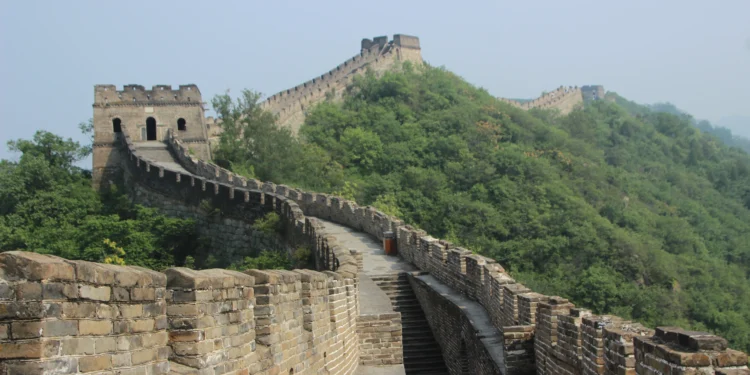The Great Wall of China is more than just an ancient fortification — it’s a living monument to human perseverance, architectural genius, and cultural pride. Stretching over 21,000 kilometres, this UNESCO World Heritage site winds across deserts, mountains, and valleys, revealing different stories and landscapes at every turn. For modern-day travellers, certain sections of the Wall stand out for their accessibility, scenic beauty, and historical depth. Whether you’re an adventurer, a photographer, or a history buff, here are the best sections of the Great Wall to explore.
1. Badaling – The Most Popular and Accessible Section
Badaling is the most famous and best-preserved part of the Great Wall, attracting millions of visitors each year. It was the first section to be opened to tourists and offers an excellent introduction to the Wall’s grandeur. Conveniently located about 70 kilometres from Beijing, Badaling is easily accessible via train, bus, or private vehicle. The paths here are well-paved, and cable cars are available, making it suitable even for families with children and elderly travellers.
Despite its popularity, Badaling never fails to impress. The panoramic views of the winding Wall cutting through mountain ridges are breathtaking, especially during sunrise or winter when the landscape is dusted with snow. It’s also a fantastic place to appreciate the strategic significance of the Wall while enjoying modern visitor facilities such as museums, restaurants, and shops.
2. Mutianyu – A Perfect Blend of Beauty and Comfort
If you’re looking for a scenic and slightly less crowded alternative to Badaling, Mutianyu is an ideal choice. This section is renowned for its lush greenery, restored watchtowers, and picturesque surroundings. Located just 73 kilometres from Beijing, Mutianyu offers an authentic yet comfortable Great Wall experience. The paths here are wide and smooth, and options like chairlifts and toboggan rides make the journey even more enjoyable.
Mutianyu’s natural beauty is particularly striking in spring and autumn. In spring, wildflowers add a burst of colour to the landscape, while autumn transforms the hills into a golden masterpiece. This section also retains much of its original charm, offering stunning photo opportunities and a more relaxed atmosphere for visitors who prefer to avoid heavy crowds.
3. Jinshanling – For Hikers and Photographers
For those who enjoy hiking and photography, Jinshanling is a dream come true. Situated about 130 kilometres from Beijing, it’s known for its balance between restored and wild sections. This means you get to experience both the preserved architecture and the raw, rugged beauty of the ancient stones. The section stretches around 10 kilometres, providing plenty of opportunities for exploration and adventure.
What makes Jinshanling truly captivating is the variety of its watchtowers and fortifications, each with a unique design and purpose. The surrounding mountains add dramatic backdrops, particularly during sunrise and sunset when golden light bathes the wall in a warm glow. Though slightly farther from the city, the serenity and scenery make Jinshanling one of the best choices for travellers seeking a deeper, more peaceful encounter with history.
4. Simatai – The Only Night-Open Section
Simatai offers a completely different experience compared to other parts of the Great Wall. It’s the only section open for night tours, allowing visitors to walk under a blanket of stars with the illuminated Wall stretching ahead. Located near the Gubei Water Town, about 120 kilometres from Beijing, Simatai perfectly combines adventure, culture, and romance.
During the day, Simatai impresses with its steep climbs and ancient charm — much of the Wall here remains in its original state. By night, the atmosphere becomes magical, as lanterns light up the stone pathways and reflections shimmer in nearby lakes. Visitors can also explore Gubei Water Town, a reconstructed ancient village offering boutique hotels, restaurants, and cultural performances, making Simatai ideal for a full-day or overnight trip.
5. Jiankou – The Wild and Untamed Beauty
Jiankou is often referred to as the most dangerous and visually stunning part of the Great Wall. This section has not been restored, giving adventurers a raw and authentic glimpse into the Wall’s history. Located about 80 kilometres north of Beijing, Jiankou attracts experienced hikers and photographers drawn to its dramatic cliffs, crumbling watchtowers, and striking mountain views.
While Jiankou is not suitable for casual tourists, its natural and untouched beauty is unmatched. The “Eagle Flies Facing Upward” and “Zhengbei Tower” viewpoints offer some of the most photographed scenes of the Great Wall. It’s recommended to hire a local guide for safety, as certain parts can be quite steep and challenging to navigate. For adventure lovers, however, Jiankou promises an unforgettable journey into the wild heart of ancient China.
6. Huanghuacheng – The Water Great Wall
Huanghuacheng is famous for its rare combination of water and wall. Here, parts of the Wall are submerged in the reservoir, creating an extraordinary sight that blends nature and history. Located about 70 kilometres from Beijing, this section is less crowded and perfect for visitors seeking a tranquil experience.
The area is especially beautiful during summer when the surrounding fields are covered in yellow wildflowers — the name “Huanghuacheng” actually means “Yellow Flower City.” Visitors can also enjoy boat rides on the lake, offering a unique perspective of the Wall from the water. For those who prefer peaceful exploration and picturesque views, Huanghuacheng is a hidden gem worth visiting.
7. Shanhai Pass – Where the Wall Meets the Sea
Shanhai Pass, also known as “The First Pass Under Heaven,” marks the eastern end of the Great Wall where it meets the Bohai Sea. Located in Qinhuangdao, this section holds immense historical significance as a key military point and the symbolic starting point of the Wall. It’s about 300 kilometres from Beijing, making it a perfect stop for travellers exploring the northeastern coast of China.
The highlight of Shanhai Pass is the “Old Dragon’s Head,” where the Wall extends directly into the sea. It’s a striking sight and a reminder of the Wall’s immense scale and the ingenuity of ancient Chinese engineering. Besides the Wall itself, visitors can explore nearby temples, gates, and museums that showcase the region’s rich history.
8. Gubeikou – A Glimpse into Ancient Warfare
Gubeikou is one of the oldest and most historically significant sections of the Great Wall. Unlike other restored parts, Gubeikou retains its original appearance, complete with ruins and weathered stones that tell stories of ancient battles. Located about 120 kilometres from Beijing, it’s a peaceful yet powerful destination for history enthusiasts.
Walking along Gubeikou feels like stepping back in time. The Wall snakes through mountains and valleys, offering spectacular views and a sense of solitude. Since much of the area is unrestored, visitors can experience the Wall as it was centuries ago — rugged, strategic, and awe-inspiring. This section is also popular among long-distance hikers who combine it with neighbouring sections like Jinshanling for a more extended trek.
Planning Your Visit
When planning your visit to the Great Wall, choosing the right tour operator can make all the difference. Expertly curated tours ensure comfort, safety, and insightful guidance throughout the journey. Many tour operators in Kerala now offer customised travel options for those seeking authentic cultural adventures in China.
If you’re dreaming of witnessing the grandeur of the Great Wall and exploring the diverse landscapes of the Middle Kingdom, consider exploring China tour packages from Kerala that include guided experiences, transportation, and accommodation. Such packages make it easier to focus on the beauty, history, and unforgettable moments waiting along this legendary landmark.
Conclusion
Every section of the Great Wall tells a different story — from the bustling crowds of Badaling to the quiet majesty of Gubeikou and the seaside wonder of Shanhai Pass. Whether you seek adventure, culture, or scenic beauty, the Wall offers endless possibilities for discovery. Visiting it is not just about seeing a world wonder; it’s about walking through history, one stone at a time.


















